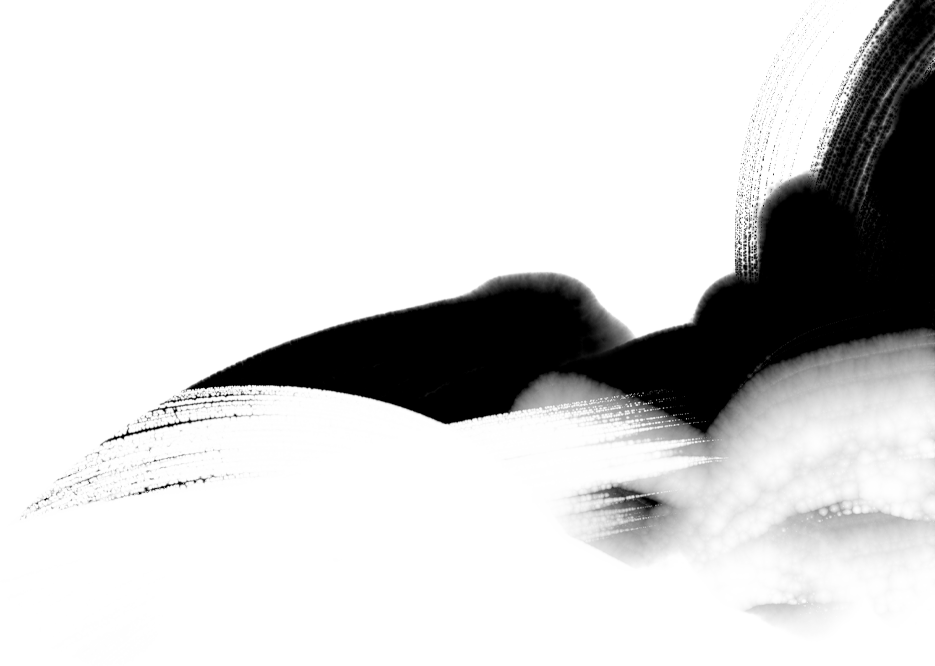




Analysis of Pulse Diagnosis in Shang Han Lun: Part Four
By Lai Haibiao
1. Floating Rapid Pulse
The floating rapid pulse refers to a pulse that is both floating and rapid. A rapid pulse often indicates heat, but sometimes a deficiency syndrome can also present as a rapid pulse.
1. Floating Rapid Pulse Indicates Exterior Syndrome
49: “If the pulse is floating and rapid, it should be treated with sweating to achieve recovery.” Here, the floating rapid pulse indicates that the disease is located in the exterior and the nature of the disease is heat; thus, the treatment should involve inducing sweating to release the exterior, leading to recovery.
52: “If the pulse is floating and rapid, sweating can be induced, and Ma Huang Tang (Ephedra Decoction) is appropriate.” This is similar to 49, where the floating rapid pulse indicates exterior heat, and Ma Huang Tang can be used to induce sweating and release the exterior, allowing the pathogen to be expelled with the sweat.
57: “If sweating has been induced for cold damage and after half a day there is renewed agitation, and the pulse is floating and rapid, further sweating can be induced, and Gui Zhi Tang (Cinnamon Twig Decoction) is appropriate.” This discusses the situation where after sweating for Tai Yang cold damage, the remaining pathogen has not been completely resolved, leading to a recurrence of symptoms. For exterior excess syndrome, Ma Huang Tang is used to induce sweating, and if the pulse becomes quiet and the body cools, it indicates that the exterior syndrome has been resolved. However, after about half a day, if there is renewed agitation and the pulse is floating and rapid, it indicates that heat has not been completely eliminated. The floating rapid pulse indicates that heat is still in the exterior, and further sweating can be induced, but Ma Huang Tang should not be used again; instead, Gui Zhi Tang should be used.
2. Floating Rapid Pulse Indicates Pathogen Has Entered Interior, but Exterior Syndrome Remains Unresolved
72: “After sweating, if the pulse is floating and rapid, and there is thirst, Wu Ling San (Five-Ingredient Powder with Poria) is indicated.” After sweating for Tai Yang disease, if the exterior pathogen is not completely resolved, the remaining pathogen can enter the water pathways of the bladder, leading to a combination of water and heat, causing thirst and a floating rapid pulse. This indicates that the exterior pathogen has not been resolved, and interior heat has developed. Ke Qin summarizes this well: “If the disease is in the exterior, use Ma Huang Tang; if the disease is in the exterior but affecting the interior, use Gui Zhi Tang; if the disease is in the interior but affecting the exterior, use Wu Ling San. If the disease is purely in the interior, use Zhu Ling Tang to promote urination, and do not use Wu Ling San to induce sweating.”
3. Floating Rapid Pulse Indicates Interior Heat Syndrome
257: “If the patient has no exterior or interior syndrome, but has had a fever for seven to eight days, even if the pulse is floating and rapid, purgation can be used.” The patient has no typical exterior or interior syndrome, but has a prolonged fever; even if the pulse is floating and rapid, purgation can still be applied. Here, the rapid pulse indicates heat, and the floating pulse indicates that heat is excessive externally. This suggests that for prolonged febrile diseases, one should not only focus on exterior or half-exterior half-interior syndromes, but also consider whether there is an interior syndrome, or whether there is interior heat accumulation, or blood heat stasis, all of which can lead to persistent fever. Mr. Hu Xishu often uses Da Chai Hu Tang (Major Bupleurum Decoction) with Shi Gao (Gypsum) or Xiao Chai Hu Tang (Minor Bupleurum Decoction) with Da Huang (Rhubarb) and Shi Gao to treat such febrile patients without obvious exterior or interior syndromes, achieving remarkable results.
363: “If there is diarrhea with a floating rapid pulse at the cun position and a tight pulse at the chi position, it must be purulent blood.” Diarrhea with purulent blood indicates that there is interior heat and excessive qi, forcing blood downward. The floating pulse indicates excessive heat in the exterior, while the tight pulse at the chi position indicates that the interior is filled with heat, obstructing the smooth flow of qi and blood, thus leading to a tight pulse at the chi position. At this time, it should be differentiated from a pulse that is tight and weak due to insufficient qi and blood.
2. Floating Moving Rapid Pulse
The floating moving rapid pulse refers to a pulse that is both floating and exhibits a moving quality. A moving pulse indicates that the pulse is floating and agitated, beating very quickly.
134: “In Tai Yang disease, if the pulse is floating and moving rapidly, the floating indicates wind, the rapid indicates heat, the moving indicates pain, and the rapid indicates deficiency. If there is headache and fever, with slight sweating, and aversion to cold, it indicates that the exterior has not been resolved.” The floating pulse indicates that the exterior pathogen has not been resolved, the rapid pulse indicates heat, and the moving pulse indicates pain. This illustrates the transformation of symptoms after mistakenly purging in Tai Yang disease, leading to chest binding or jaundice. When treating interior syndromes, one should differentiate whether there is a concurrent exterior syndrome; if there is headache, fever, and aversion to cold, it indicates that the exterior syndrome has not been resolved, and one should first resolve the exterior before treating the interior syndrome.
3. Floating Slippery Pulse
The floating slippery pulse refers to a pulse that is floating and also exhibits a slippery quality. A slippery pulse indicates that the pulse is smooth and flowing, resembling pearls rolling on a jade plate. It primarily indicates phlegm-dampness, food stagnation, excess heat, pregnancy, etc., and can also be seen in normal individuals.
1. Floating Slippery Pulse Indicates Phlegm Heat
138: “In the case of small chest binding disease, if there is pain upon palpation below the heart and the pulse is floating and slippery, Xiao Xian Xiong Tang (Minor Decoction for Chest Binding) is indicated.” Here, the floating slippery pulse indicates that the pulse is superficial, while the slippery quality indicates phlegm-dampness. Phlegm heat accumulates below the heart, causing pain upon pressure, indicating that the phlegm and heat are relatively superficial, and the condition is mild; thus, Xiao Xian Xiong Tang can be used to clear heat, transform phlegm, and open the binding.
2. Floating Slippery Pulse Indicates Interior Heat
140: “In Tai Yang disease, if purgation is applied and the pulse is rapid, but there is no chest binding, this indicates a desire to resolve. If the pulse is floating, there must be chest binding. If the pulse is tight, there must be throat pain. If the pulse is wiry, there must be tightness in both flanks. If the pulse is thin and rapid, the headache has not stopped. If the pulse is deep and tight, there must be a desire to vomit. If the pulse is deep and slippery, it indicates that heat is being resolved. If the pulse is floating and slippery, there must be blood in the stool.” In Tai Yang disease, one should induce sweating to release the exterior; if purgation is mistakenly applied, various transformations may occur. Zhang Zhongjing illustrates the changes in pulse quality, including rapid, floating, tight, wiry, thin and rapid, deep and tight, deep and slippery, and floating and slippery, totaling eight conditions. This passage is controversial, but it is discussed here. The floating slippery pulse indicates that the exterior pathogen has penetrated the interior, leading to stagnation and transformation into heat, which can cause blood to flow abnormally, resulting in blood in the stool.
176: “In cold damage, if the pulse is floating and slippery, this indicates heat in the exterior and cold in the interior; Bai Hu Tang (White Tiger Decoction) is indicated.” This passage has much debate regarding whether it indicates heat in the exterior and cold in the interior; the orthodox school believes it indicates heat in the exterior and cold in the interior, while the simplified school believes it is incorrect and should indicate cold in the exterior and heat in the interior. The harmonizing school believes that cold is the pathogen, or that the statement “heat in the exterior and cold in the interior” is correct, indicating that yin cold is excessive internally while yang is floating externally. However, the formula is incorrect; it should be Bai Tong Tang (White Unblocking Decoction) for treating Yang Ming syndrome. The concepts of exterior and interior are not absolute but relative. Yang Ming and Tai Yin are interrelated; in this case, the exterior refers to Yang Ming and the interior to Tai Yin. The internal accumulation of heat obstructs the distribution of yang qi, which may lead to cold symptoms locally.
4. Floating Large Pulse
The floating large pulse refers to a pulse that is both floating and large. A large pulse indicates that the pulse is wide.
1. Floating Large Pulse Indicates Deficient Yang Floating Externally
30: “If the cun pulse is floating and large, the floating indicates wind, and the large indicates deficiency; wind can cause slight heat, and deficiency can lead to cramping in both legs.” This should be viewed in context. The appearance of “reversal, dryness in the throat, and cramping in both legs” can be traced back to the cun pulse being floating and large, where the floating indicates wind, leading to slight heat; the large pulse indicates true deficiency, where both yin and yang are deficient, and the yang qi is insufficient to warm and nourish the yin blood, resulting in cramping in the legs.
132: “In the case of chest binding syndrome, if the pulse is floating and large, it should not be purged; purging will lead to death.” Chest binding syndrome is an interior syndrome, where the pathogenesis involves phlegm heat accumulation. The pulse should be slippery and deep; if the pulse is floating and large, it may indicate that yang is deficient internally, and true yang is about to escape; purging in this case will lead to death. The floating large pulse should be carefully assessed for whether the pulse is strong or weak; if the floating large pulse is strong, it indicates that the exterior pathogen has not been resolved and heat accumulation is not solid; if the floating large pulse is weak, it is not a typical exterior pulse but indicates that the yang qi is deficient and floating, indicating a critical condition that should not be purged.
2. Floating Large Pulse Indicates Excessive Yangming Heat
268: “In the case of three yang combined disease, the pulse is floating and large, with the upper pulse being strong, and the patient desires to sleep; if the eyes are closed, there will be sweating.” Three yang combined disease refers to the simultaneous invasion of the Tai Yang, Yang Ming, and Shao Yang channels. The floating pulse indicates the Tai Yang pulse, while the large pulse indicates the Yang Ming pulse; the upper pulse is strong and straight, resembling the wiry pulse of the Shao Yang. The heat pathogen rises to the head, causing confusion and drowsiness; the heat forces fluids outward, leading to sweating when the eyes are closed. Therefore, this passage indicates that the primary condition in three yang combined disease is excessive Yang Ming heat.
Warm Reminder: This public account article aims for academic discussion and exchange; it is not recommended to directly use the treatment methods mentioned in the text. If you need to use them, please consult a professional doctor or go directly to a medical institution for treatment. Thank you for your understanding and support!


